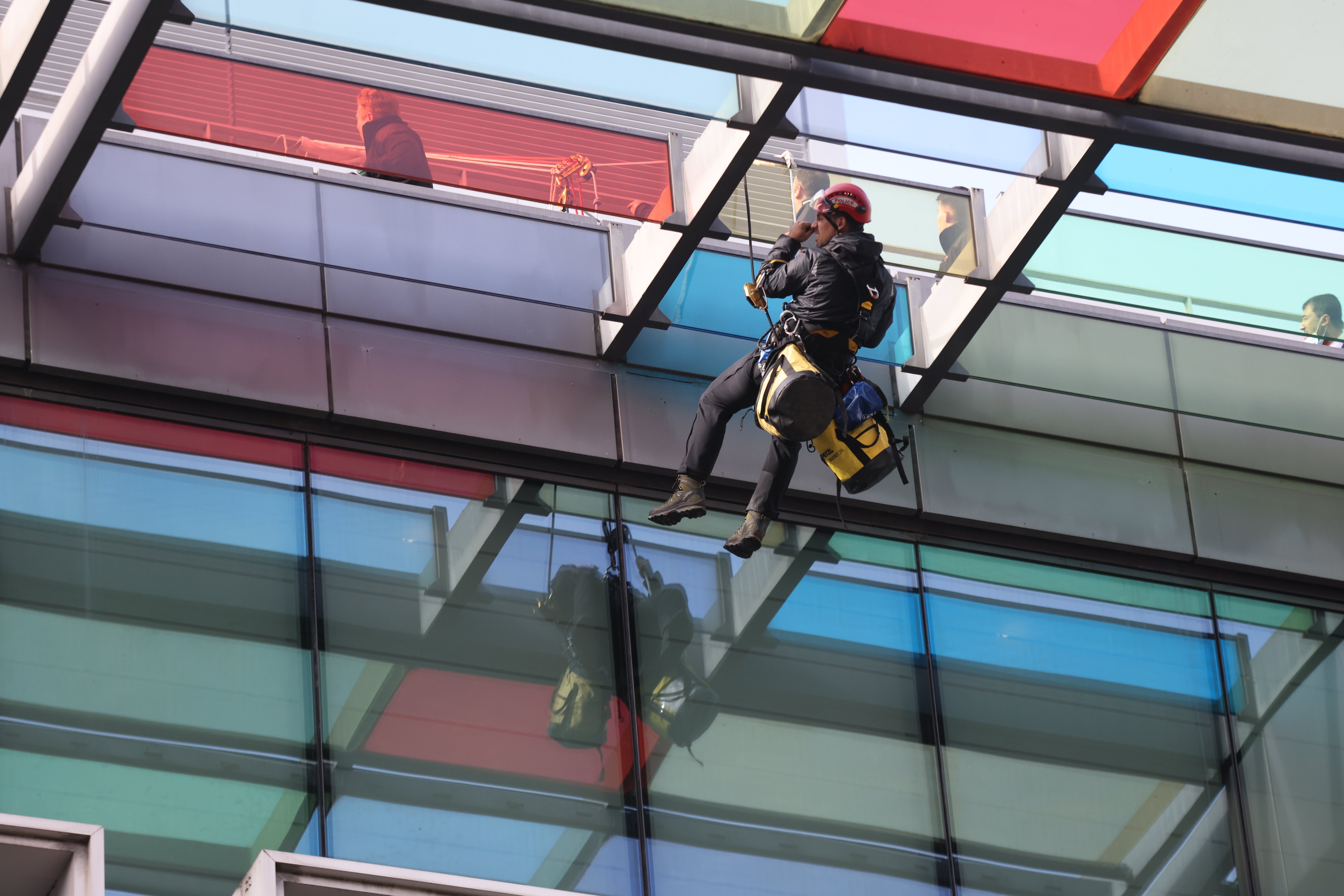Activists who scaled government building to face fresh trial
Court told that Home Secretary Priti Patel was put at ‘additional risk’ by the protest.

Activists are to face a fresh trial over allegations that they scaled a government building.
Orla Coghlan, 26, Jamie Ozden, 25, and Annabel Berwick, 19 are believed to be members of Animal Rebellion, an off-shoot of Extinction Rebellion.
They were among a group of protesters who allegedly climbed the Department for Environment, Food and Rural Affairs (Defra) building in Westminster at around 6am on October 26.
Inspector Michael Richards told a one-day trial hearing at Westminster Magistrates’ Court in central London that the Home Secretary’s private protection officer had wanted to access the building in Marsham Street because of an “essential meeting”.
He told the court that Priti Patel was put at “additional risk” by the protest.
Mr Richards said: “I had to formulate a plan to get the Home Secretary into the building while not being at risk from the protesters at a height.
“It did create additional risk to the Home Secretary at that time.”
Protesters who had climbed the building were approximately 20 metres (65ft) in the air and had dropped a banner that read: “Cop26 invest in a plant-based future”.
Coghlan and Ozden, both from Tottenham, north London, and Berwick, of Cambridge, denied a charge of aggravated trespass which stated that they failed “to leave the land”.
At the end of Friday’s hearing, the prosecution laid a new charge of aggravated trespass with intent to obstruct or cause unlawful activity against all the defendants.
The hearing was halted and a new trial at the same venue was set for two days from June 8.
Earlier the court had also heard that the London Fire Brigade (LFB) and the ambulance service plus members of the public were at the scene, which drew attention from the press.
Police removal officers, who are able to climb buildings, were called to help get the protesters down.
Mr Richards said his “main consideration was the safety of the climbers and the people below” as they could have fallen or dropped something on passers-by who were at ground level.
He closed Marsham Street and gave an official warning at 8.54am to the protesters through a megaphone.
Mr Richards said: “I heard it was a regular defence for people to say that they did not hear or understand the warning that was given.
“The London Fire Brigade gave me a loudhailer which they said could be heard as they assist in getting people out of buildings.”
He tested the equipment for sound on police officers who were on the ground and around 40 metres (131ft) away.
“I spoke to an officer who said they could hear me with the loudhailer,” he told the court.
Mr Richards said he gave his warning while standing slightly back at the foot of the building and while looking straight upwards.
He estimated the protesters were about 20-30 metres (65-98ft) away. He and other officers had asked if they were OK before the warning was given, the court heard.
There was no response or comment from the protesters, who were wearing harnesses, and eventually left the building at 6pm. Mr Richards recalled the protesters appeared to be talking to each other during the demonstration and that red smoke flares were set off.
During the protest he had been contacted by a chief inspector about reopening the road. He said: “I was under pressure to open up the road.
“It was an iconic location and MPs needed to be able to take their meetings.”
On the possibility that they may not have heard the warning, Mr Richards told the court: “I find that unlikely – anything is possible.”
His body-worn recording shows that a whistling or whining sound could be heard as he gave his warning.
Mr Richards told the court that he only gave the warning once and could not say how windy it was or if the height the protesters had pitched themselves at had made a difference to what they could hear.
